Indian Healing Clay Has Healthful Benefits
You may have heard about people using Indian Healing Clay and some of the benefits they have experienced since using it. The form of healing clay is bentonite which is a natural clay that has a fine soft texture. It is usually applied as a mask to the face or hair to remove toxins, and impurities from the body.
Using healing clay is very beneficial for humans as it was used for facial masks for thousands of years. Basically, it’s a clay powder that is fine and soft texture. When liquid, like water or vinegar is added to it, it forms a paste. People have used this paste for medical or cosmetic benefits like treating acne, rashes, or a hair mask and other such uses.
Healing clay can be taken internally or be used externally. However, when one plans on using bentonite clay for internal uses, the container must clearly state on the package that it can be used for that purpose. If this is lacking, it can only be used for external purposes.
Table of Contents
If you are interested in learning more about a specific topic, just click on the topic of interest below. You will be taken directly to that section. Or, you can scroll down to view them all.
Where Does Bentonite Clay Come From?
Bentonite clay contains natural minerals such as calcium, magnesium, and iron that may provide benefits to people. Bentonite forms and comes from volcanic ash. It comes from Fort Benton, Wyoming thus the name bentonite . This type of clay can be found in other places where volcanic ash has settled into the ground. For instance, montmorillonite clay is named after Montmorillon located in France. This is the same type of clay.
There have been lots of studies about the health benefits of bentonite clay when adding it into drinks or foods with the objective of relieving digestive issues or removing toxins from the body.
As with any healthful treatment, there are also some risks that is associated with using bentonite clay. These we will also discuss later in this article.
Many studies have looked at the health benefits of bentonite clay, though most of this research has used animal or cell models. More research is needed before scientists will know the true benefits and risks of bentonite clay in humans.
In this article we will provide some healthful benefits you can experience when using healing clay.
Types of Healing Clay
Below we will provide information about the five different types of healing clay. You will be able to determine which one is best for your.
-
- Bentonite Clay
- Rhassoul Clay
- Kaolin Clay
- Fuller’s Earth Clay or Multani Mitti Clay
- French Green Clay
Bentonite Clay
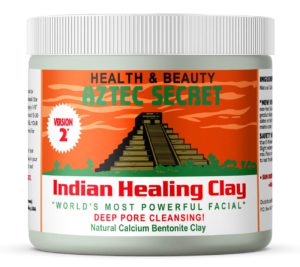
This is the most famous of all the healing clays. It has many benefits for the skin. The reason being it’s absorbing capacity that helps in removing toxins, chemicals, bacteria, fungi and other impurities from the body. This clay is best for acne, skin tightening, and contamination absorbing capacities. It’s great for all skin problems. It helps remove dirt and impurities from the pores of the skin.
The best clay to use is the Aztec Secret Indian Healing Clay for external uses.
Please note that there are two types of bentonite clay’s; calcium and sodium.
Calcium is the more expensive of the two clay’s. However, it is best when using the clay for detoxing. It has the highest ADsorbers. Basically, calcium substitutes or changes places with elements outside and this is known as ionic substitution. This clay is superior and most effective for skin problems and detoxifying.
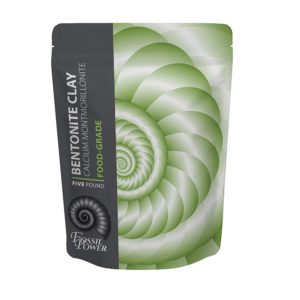
Sodium it is known for its Absorption swelling ability. It helps those who use this type of clay to dry their oily skin. As the clay dries on your face, it physically draws out moisture mixed the oils which is a benefit for those who want to remedy oily dirty skin. However, this clay contains a high value of pH which is adverse to your skin.
When taking the clay for internal uses, be sure the packaging clearly states it can be used for internal purposes. Be sure to follow the directions on the package.
Rhassoul Clay
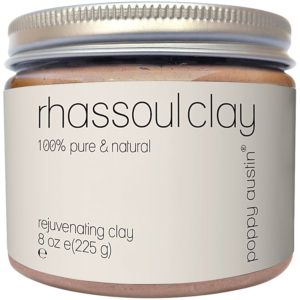
This clay is mined in Morocco and is great for both hair and skin. It’s rich in minerals and made up of negative charge and since the toxins in the skink are positively charged, they are drawn like a magnet in removing them. It is great for absorbing extra build up on the hair and for shine on the hair.
Kaolin Clay
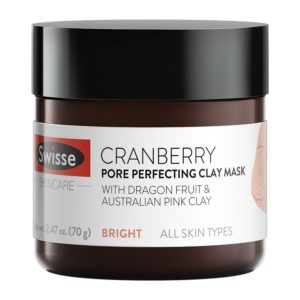
This type of clay comes in various colors such as pink, white, red and yellow. Each color has different capacities and are explained below.
Pink Kaolin Clay – It is practically a blend of the red and white kaolin clays. It is ideal clay for delicate skin that requires soft exfoliation and oil vacuuming.
White Kaolin Clay – This clay is great for those that have sensitive and dry skin. The clay does not absorb a lot. It softens the skin with delicate bits for soft exfoliation. If you have sensitive skin this clay you may want to consider using clay.
Red Kaolin Clay – If you have oily skin, this type has the most absorbing capacity. It is also good for acne, and detoxifying masks for the body and face.
Yellow Kaolin Clay – This clay can be used for individuals with delicate or sensitive skin. The clay will boost circulation and is also used in brightening masks.
Fuller’s Earth Clay or Multani Mitti Clay

Fuller’s Earth Clay is another absorber of contaminants and oil. There are such huge numbers of uses for Fuller’s Earth Clay. This is an incredible oil absorber for your face. It works admirably to address hyper pigmentation, as it has gentle blanching properties. At the point when joined with rose water and utilized as a mask, Fuller’s Earth Clay helps in boosting circulation. The clay is prescribed for individuals with oily skin because it can be very drying. If utilized once a week, it can be effective for normal skin as well.
French Green Clay
French green clay is also known as the green healing clay that is found in
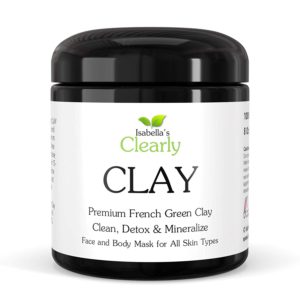
France. French Green clay is your go-to clay for pore-fixing and exfoliation along with absorption of oil. The color of the clay originates from the measure of iron-oxide and disintegrated plant material. This clay should never by white or grey, it should be green. French Green Clay not only drinks up oils, but it also extracts blood towards the surface of the skin. As it boosts circulation, it gives you a tingling sensation on the skin.
As you can see, you must decide which of the above clay’s is best for you and your skin.
Side Effects of Healing Clay
Generally speaking, using healing clay is safe when used correctly. However, some precautions should be taken when using bentonite clay. These are mentioned below.
-
- Sensitive and oily skin. You should use a milder type of clay. Using calcium bentonite clay will cause your skin to appear red after applying the mask. It does go away in about 30 minutes after mask is removed. You can use this clay for detoxing by leaving it on for 10 minutes.
- Some bentonite clay’s may have lead and other metals in them. This is either for internal or external use. Children and pregnant women should not use this form of clay. Stay away from “Bentonite Me Baby” by Alikay Naturals and “Best Bentonite Clay” from Best Bentonite because of potential lead poisoning risk they pose.
- If you are taking bentonite clay internally for detoxing do not take it in large doses. Taken in large quantities could result in the clay expanding and disrupting normal digestion and problems with absorbing vital nutrients.
- Ingesting clay long-term can cause low levels of potassium and iron. It might also cause lead poisoning, muscle weakness, intestinal blockage, skin sores, or breathing problems. It must be taken in low doses for maximum effect for removing toxins, and heavy metals from the body.
How Does Bentonite Clay Work?
Scientists believe that bentonite clay works by adsorbing oils and dirt from the skin. The theory is that bentonite clay adsorbs materials by sticking to their molecules or ions. As the clay leaves the body, it takes the toxins or other molecules with it.
When a person uses it on the skin, bentonite clay may have the power to adsorb oils and bacteria. When they consume the clay, it may adsorb toxins or other unwanted substances from the digestive tract.
Bentonite clay contains natural minerals such as calcium, magnesium, and iron which may provide additional benefits.
Bentonite clay forms from volcanic ash. It gets its name from Fort Benton in Wyoming, where it occurs in large amounts. For instance, people can also find this clay in other places where volcanic ash has settled into the ground. Montmorillonite clay, named after Montmorillon in France, is the same type of clay.
Benefits of Using Bentonite Clay
There are some actual healthful benefits of using bentonite clay. When taking bentonite clay internally, be sure the package clearly states it can be used for internal purposes. You can read about them below.
Removing Toxins from the Body
Bentonite clay is quite effective at removing toxins, which is important. Even if we stick to a healthy Paleo diet of organic, minimally processed foods, it’s impossible to avoid exposure to environmental toxins.
Bentonite clay can help in this area. A big promoter comes from volatile organic compounds (VOCs), an assortment of chemicals that are emitted from paint, office equipment, cleaning supplies, building materials, and tons of other everyday items you can’t really avoid. Bentonite clay’s ability to adsorb VOCs, which reduces our exposure to these harmful chemicals by removing them from the body.
The clay can also help remove toxic metals (e.g., mercury, cadmium, and lead) from our systems. Over time, these metals can accumulate from processed foods, low quality drinking water and your environment. One study focused on four heavy metals; it found that Bentonite clay significantly reduced all of them.
How to use
Mix up to 1 teaspoon (tsp) of bentonite clay with 6–8 ounces (oz) of purified water and drink once per day.
Take bentonite clay at least 2 hours before or after taking any medications. Because it can adsorb other molecules, bentonite clay may bind to some medications and reduce their effectiveness.
To use the clay externally for detox, you can also try any of the following:
-
- Gargle the clay and some water in your mouth for 30 seconds to 1 minute, then spit out the clay and rinse your mouth with clean water.
- Add a ¼ of a cup of the clay to your bath, allow it to dissolve into the water and soak for as long as you’d like, then rinse your skin with clean water.
- Create a bentonite clay face mask by smearing the clay mixed with water or apple cider vinegar directly onto your skin, especially anywhere where you have blemishes or irritation. Allow the face mask to dry (about 20 minutes) and then rinse it off with warm water. This a great detoxifying mask to use once or twice per week.
Treating Oily Skin and Acne
Bentonite clay’s adsorbent power may be helpful in treating acne breakouts and oily skin. The clay can help remove sebum, or oil, from the skin’s surface, and it may also have a calming effect on inflamed breakouts.
Using a clay face mask can help remove impurities from the skin to treat acne or reduce the risk of pimples and skin infections.
How to use
Many commercial facial masks contain clay’s because of their clarifying effect on the skin. Some skin care masks contain bentonite, but a person can also make their own bentonite mask at home.
Mix bentonite clay powder with water to make a thick paste. Apply to the areas of skin that are prone to oil or acne. Leave the mask on for 20 minutes and rinse thoroughly. Repeat two or three times per week.
Treating Poison Ivy
Many people are allergic to urushiol, the oil that poison ivy plants produce. When their skin comes into contact with poison ivy, they may develop the characteristic rash as an allergic reaction.
A poison ivy rash can cause redness, irritation, and severe itching. A study from 1995 found that bentonite clay can treat poison ivy rash and speed up healing following an allergic reaction.
How to use
Wash the skin with soap and water as soon as possible after touching poison ivy. Use dish soap or a soap designed to remove oils to help remove the urushiol from the skin.
Mix bentonite clay with water to form a paste and apply it to the affected area. Cover with a clean bandage or gauze pad. Repeat several times per day until the rash is gone.
Aiding Weight Loss
Bentonite clay may be a helpful supplement for people who are trying to lose weight.
A study found that ingesting a montmorillonite clay product helped reduce weight gain among those eating a high-fat diet.
Although some traditional healing methods have used clay products for many years, there are better ways to lose weight. Reducing calorie intake and increasing physical activity levels are still the best choices.
Relieving Constipation
Because bentonite clay can stick to toxins, it may be helpful for regulating a person’s digestive tract.
One review of the benefits of bentonite clay has suggested that the clay may help some people who have irritable bowel syndrome with constipation. This use of bentonite clay merits more research but shows promise.
Treating Diarrhea
Some research suggests that adsorbent clay’s such as bentonite may help alleviate virus-related digestive issues, such as diarrhea.
For example, rotavirus can cause severe diarrhea and spreads easily from person to person. One study found that an adsorbent clay called diosmectite helped stop rotavirus from replicating.
If diarrhea does not subside after treatment with clay products, a person should continue to drink plenty of fluids, try more common approaches to treating diarrhea, and contact their doctor.
How to use
For virus-related mild diarrhea, take 1 tsp of bentonite clay mixed in water no more than twice per day. If diarrhea persists, see a doctor.
Treating Diaper Rash
Bentonite clay was effective in treating diaper rash.
Around 93% of the infants who received the clay had improved rashes within 6 hours, with 90% completely healed in 3 days.
How to use
Mix a small amount of bentonite clay with water to make a paste and apply it directly to the rash.
Alternatively, mix the clay with shea butter, coconut oil, or zinc oxide cream. Do not shake the powder directly on to the baby’s skin, as they may inhale some of it.
Keep the mixture in a clean glass container with a plastic, silicone, or glass lid. Do not use metal lids, as the clay may adsorb some of the metal’s properties over time.
Always speak to a doctor before trying any new remedy in a baby or child.
Providing Sun Protection
The Food and Drug Administration (FDA) have not approved bentonite cream as a sunscreen ingredient. However, one study suggests that the clay can protect the skin from harmful ultraviolet rays.
For this reason, people may wish to use it alongside FDA-approved sunscreens.
Removing lead and Other Heavy Metals
Excessive exposure to heavy metals such as lead can cause health problems. Children’s brains are especially sensitive to lead, and it can cause learning disabilities and other issues.
Avoiding exposure to lead and getting tested for lead exposure are the best ways to prevent lead poisoning. According to some research, bentonite clay may be helpful in removing some lead from the body.
Bentonite clay has a negative charge, meaning that it can bind to positively charged metals such as lead.
How to use
Ask a doctor before giving bentonite clay to a child. If a doctor approves it, give half a teaspoon mixed well with water once per day.
Lowering Cholesterol
High cholesterol is a leading cause of heart disease. High cholesterol causes fats to build up in the blood vessels, which can lead to heart attack and stroke.
A study in rats found that a bentonite clay product increased the amount of cholesterol excreted in their stool.
How to use
People receiving treatment for high cholesterol should talk to their doctor before using bentonite clay or other natural remedies. Bentonite clay should not replace medical treatment for high cholesterol or heart disease.
Mix 1 tsp of bentonite clay with purified water and drink once per day.
Risks In Taking Bentonite Clay
Studies have not found any serious side effects of using bentonite clay in recommended amounts on the package. However, because it is a natural product, there is a risk of contamination.
Bentonite clay comes from the earth, where it may collect heavy metals, pesticides, or other substances.
The FDA does not regulate bentonite clay products. As such, it can be difficult to know whether the product contains only the ingredients on the label. In fact, experts have found that some bentonite clay products may contain heavy metals.
In 2016, the FDA warned consumers not to use a certain type of bentonite clay due to it having high lead levels.
If a person wants to use bentonite clay, they should look for a product labeled as safe for internal use from a reputable brand or source. They may also wish to have a doctor check their blood lead levels to be sure that they are not exposed to lead from bentonite clay.
Drink plenty of water throughout the day while using bentonite clay. This will help flush the clay from the digestive tract and prevent constipation.
Before using bentonite clay or any natural remedy on the skin, do a skin test first for allergies. Apply a small amount of the product to the area inside the elbow and wait for 24 hours. If no reaction occurs, proceed with using the product.
Shop Healing Clay’s
Below you will find healing clay’s that can be used internally or externally. Click on the image of the product of choice. You will be taken to Amazon where you can place the order and see the latest price.
As an Amazon associate, I earn from qualified purchases.
 |
 |
 |
 |
 |
 |
Did not find what you were looking for? Enter a search term in the Amazon Box below to search on Amazon for other products.
Go back to the Pros Cons Shopping home page.